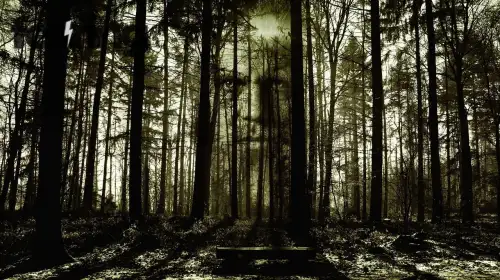Ghost Towns Across the Continent tell stories of lives interrupted — once-thriving villages now silent, their streets reclaimed by nature and memory. From Italian mountain hamlets swallowed by landslides to Eastern European mining towns abandoned after collapse, these places stand as eerie memorials to history’s sudden shifts.
In 2025, a new wave of explorers, historians, and filmmakers is rediscovering these lost settlements. “A ghost town is a photograph you can walk through,” says cultural geographer Dr. Helen Fisher. “Every window is a question about what happens when progress forgets its own footprints.”
Why Europe Has So Many Ghost Towns
Europe’s dense and ancient history has created countless abandoned settlements. Wars, natural disasters, disease, and economic decline left entire communities empty. Some were deserted overnight; others slowly faded across decades.
According to the European Heritage Travel Report 2025, there are more than 3,000 officially recognized ghost towns across the continent. Countries such as Italy, Spain, and Romania lead in recorded sites due to depopulation, rural migration, and environmental instability.
Historian Dr. Ibrahim Kaya explains, “Europe’s ghost towns are not failures. They are records — reminders of how civilizations adapt and move on.”
Europe’s Most Fascinating Ghost Towns
Below is a list of some of Europe’s most iconic ghost towns that can still be explored today — each one frozen in its own era.
| Ghost Town | Country | Cause of Abandonment | Distinctive Feature |
|---|---|---|---|
| Oradour-sur-Glane | France | WWII massacre (1944) | Preserved as a war memorial village |
| Craco | Italy | Landslides and earthquakes | Dramatic hilltop ruins featured in films |
| Kayaköy | Turkey | Greek-Turkish population exchange (1923) | Thousands of roofless stone houses |
| Varosha | Cyprus | Turkish invasion (1974) | Coastal resort sealed and untouched for 50 years |
| Belchite | Spain | Spanish Civil War destruction | Ruined churches and bullet-scarred walls |
| Pyramiden | Svalbard (Norway) | Soviet mining collapse | Preserved Soviet-era town in Arctic isolation |
| Doel | Belgium | Industrial expansion threat | Murals and urban art cover abandoned homes |
| Balestrino | Italy | Earthquakes and instability | Medieval fortress overlooking the Ligurian coast |
| Kolmanskop | Namibia (former German colony) | Diamond mine depletion | Sand-filled European-style houses |
| Pripyat | Ukraine | Chernobyl disaster (1986) | Iconic ghost city frozen since nuclear evacuation |
Traveler Elena Rossi described visiting Craco as “standing inside a heartbeat that never stopped.”
The Psychology of Abandonment
Psychologists suggest that ghost towns evoke deep emotional responses because they combine beauty with loss. Seeing a once-lively street overtaken by weeds activates the human brain’s empathy circuits.
Dr. Chris French, a cognitive psychologist, explains, “Our minds interpret emptiness as potential — we imagine the people who used to live there. In that sense, every ghost town is haunted by memory, not by spirits.”
Still, many visitors claim to feel an unshakable presence — a “weight in the air,” as if time itself refuses to let go. Paranormal researcher Dean Radin notes, “Haunted doesn’t always mean supernatural. It can mean emotionally charged, and that’s just as real.”
When History Stopped Moving
Some ghost towns were erased in a single moment. Oradour-sur-Glane, in France, remains exactly as it was left after a Nazi massacre in 1944. Cars still sit in the streets, sewing machines rest on tables, and rusted bicycles lean against walls.
Others, like Kayaköy in Turkey, faded gradually after political upheaval and mass migration. The silence there isn’t violent — it’s melancholic. As Turkish writer Elif Şafak once wrote, “Ruins are the language of what we choose not to rebuild.”
Technology and Preservation
In 2025, digital preservation has become vital in studying Europe’s abandoned towns. Using LIDAR scanning, drone photogrammetry, and AI-based mapping, archaeologists now reconstruct entire ghost towns virtually before erosion claims them.
| Technology | Purpose | Example of Use |
|---|---|---|
| LIDAR Scanners | Create 3D terrain models | Used in Craco and Belchite for mapping collapse risks |
| Drone Photography | Captures high-resolution imagery | Surveys rooftops and inaccessible ruins |
| AI Reconstruction | Digitally rebuilds lost architecture | Applied to Oradour-sur-Glane and Doel |
| Environmental Sensors | Monitor decay and vegetation growth | Used in Varosha for coastal preservation |
Engineer Marina Lopez explains, “Ghost towns decay faster than people imagine. Technology lets us preserve them for memory, if not for habitation.”
The Art of Stillness
Ghost towns have inspired a generation of photographers and filmmakers. The contrast between decay and beauty reflects modern existential themes — time, loss, and the fragility of civilization.
Photographer Jean-Luc Descartes, whose project Whispers of Stone documents abandoned villages, says, “You can’t stage silence — you have to earn it. Standing alone in a ghost town is like listening to history exhale.”
Cultural festivals across Europe now celebrate this art form. Craco, for instance, hosts an annual “Festival of Lost Places,” featuring installations that blend virtual projections with real ruins.
Ghost Tourism: Between Memory and Commerce
While many visit for reflection, ghost towns also fuel tourism economies. Local governments have turned some sites into open-air museums, balancing history and revenue.
The World Travel Market Report 2025 reports that “dark heritage tourism” in Europe generated €3.1 billion last year. Ethical travel consultant Lena Ortiz warns, “These places are sacred in their silence. If we turn them into theme parks, we lose what makes them meaningful.”
Sustainable tourism initiatives now emphasize storytelling, education, and respect — focusing on the human histories behind the ruins rather than exploiting their eeriness.
Lessons Written in Stone
Every ghost town tells a cautionary tale: about overreliance on industry, political upheaval, or the unpredictability of nature. Environmental scientist Dr. Ibrahim Kaya remarks, “A ghost town isn’t just a ruin — it’s a warning.”
These lessons resonate today as rural depopulation continues. Thousands of European villages face abandonment as younger generations move to cities. By studying forgotten settlements, historians hope to preserve not only structures but also cultural identity.
Traveler Maya Klein, after visiting Doel in Belgium, reflected, “I thought I was exploring decay. But what I saw was life pausing, not ending.”
How to Explore Responsibly
If you plan to visit Europe’s ghost towns, follow these guidelines to ensure respect and safety:
Check Access Rules: Many sites are protected; some require permission or guided tours.
Avoid Damage: Do not climb, remove artifacts, or paint over ruins.
Learn the Story: Understand the site’s context — every wall has history.
Travel Lightly: Preserve the atmosphere; ghost towns rely on silence.
Support Local Efforts: Buy tickets or donate to preservation funds.
As heritage advisor Dr. Sarah Bartlett says, “Exploring a ghost town should feel like visiting a grave — quiet, curious, and reverent.”
Why Ghost Towns Still Haunt the Living
Whether echoing with forgotten laughter or the rumble of machines long silenced, ghost towns remind us that permanence is an illusion. The Europe we know today will someday leave behind its own ruins — waiting for future generations to rediscover.
Astrophysicist Neil deGrasse Tyson once said, “We are all ghosts of our ancestors — walking in their shadows.” That truth lingers in every crumbling wall and empty window across the continent.
FAQ
Q1: Can tourists visit European ghost towns safely?
A1: Yes. Many are open for guided tours, such as Craco, Belchite, and Oradour-sur-Glane, though caution is advised due to unstable structures.
Q2: Are ghost towns really haunted?
A2: While reports of apparitions exist, most hauntings are psychological — the power of suggestion in powerful settings.
Q3: Which European ghost town is most famous?
A3: Craco in Italy and Oradour-sur-Glane in France are among the most visited and historically significant.
Q4: Can people still live in ghost towns?
A4: Some, like Doel in Belgium, still have a handful of residents protecting their heritage.
Q5: Why are ghost towns important today?
A5: They preserve the story of industrial shifts, wars, and migration — teaching us how societies transform and endure.
Sources
World Travel Market Report 2025
European Heritage Travel Report 2025
Society for Psychical Research Archives




